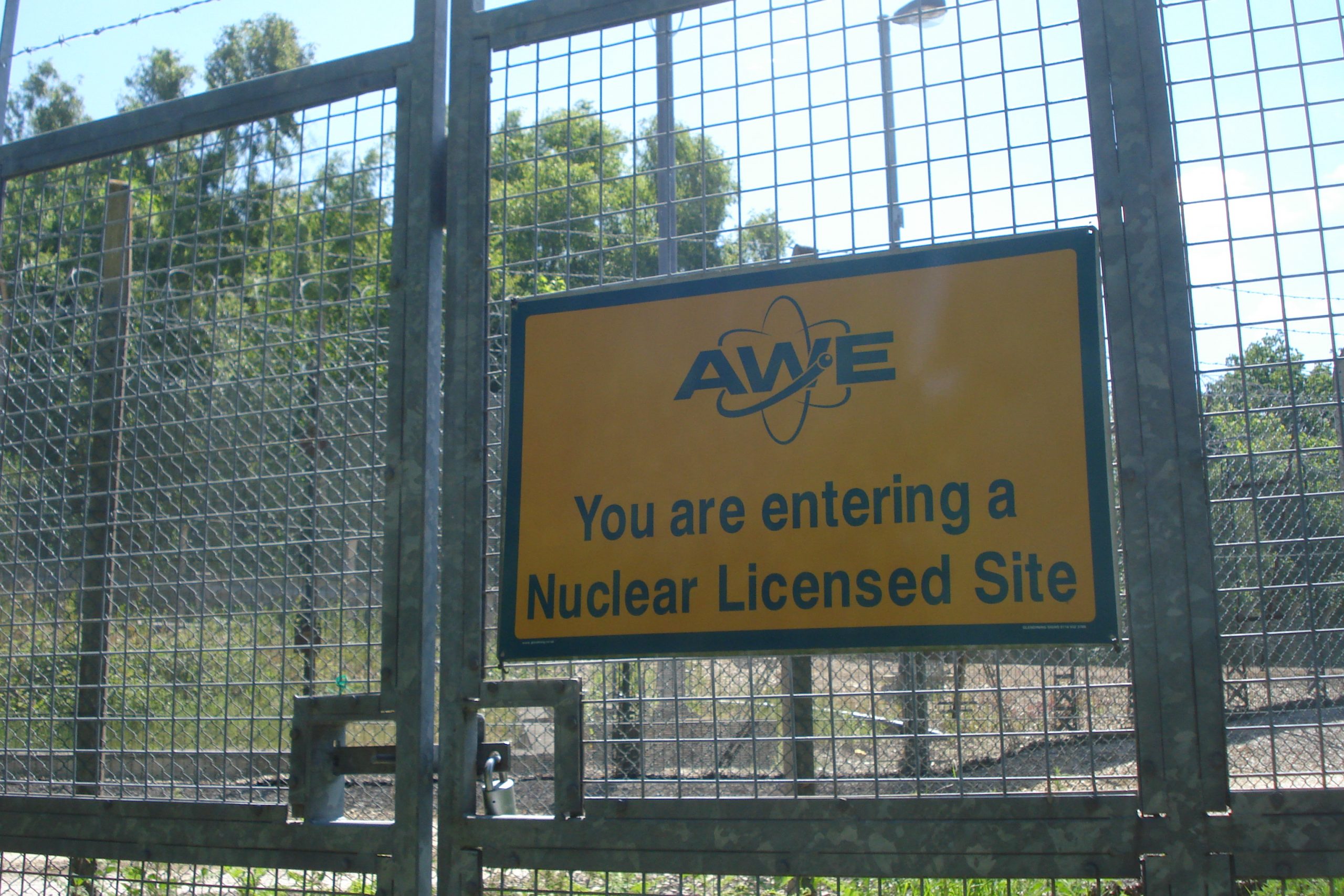In late January it was announced that the Atomic Weapons Establishment (AWE) have applied to the Environment Agency to increase the quantity of volatile beta emitters that AWE Aldermaston is allowed to release into the environment. Beta emitters are radioactive elements that produce beta radiation. Volatile is a chemistry term which refers to a substance that tends to vaporise and become a gas.
AWE are currently allowed to release 4.4 megabecquerels (MBq) of volatile beta emitters into the air as gas every year and they have applied to increase their limit to 100 MBq a year. This would be an increase of 22 times, or 2200%. A becquerel is a measure of the quantity of radioactive material. One bequerel is the quantity of material where radioactive decay will occur once every second. A megabecquerel means one million becquerels of material.
The environment agency is running a consultation on AWE’s application, which closes on the 22nd February.
AWE is required to have regular meetings with local councillors as part of the terms of its Nuclear Installation License. These are held three times a year and are attended by the Office for Nuclear Regulation and the Environment Agency. AWE did not put the application on the agenda for the most recent meeting, although it was signed the day before the meeting.
The majority of volatile beta emitters released by AWE as gas are one of four isotopes: ruthenium (103Ru), iodine (131 and 132I), and technetium (99Tc). The isotopes are released during a process to prepare samples for testing as part of AWE’s nuclear forensics capability.
AWE is allowed to release other radioactive contaminants into the environment, including tritium, but these have a separate limit and are not affected by the current application.
This testing process was originally used to analyse samples taken when the UK carried out live nuclear tests before 1992. At that time the allowed discharge limit was 100 Mbq. Once testing ceased discharges were considerably lower and the limit was reduced to the current level of 4.4 Mbq.
Since 2005 the UK has participated in joint exercises with other countries where all participants analyse the same samples and compare the results in order to rehearse the testing process and validate their testing methods. The MOD requires AWE to maintain a nuclear forensics capability, primarily to assist nuclear non-proliferation efforts.
The radioactivity of the samples in the programme have recently increased. This has caused AWE to come close to breaching the current limit, as the process of preparing a more radioactive sample releases greater quantities of volatile beta isotopes. In one case AWE had to delay processing some samples in order to stay within its current 12 month limit.
AWE does not have any control over the radioactivity of the samples and other specifics of the programme. The supporting documents for its application say that these are determined by ‘key allies’, but the countries involved are not named. It would be possible to install equipment to reduce the quantity of volatile beta isotopes released into the environment, but AWE has rejected this as “grossly disproportionate”. No costings for this have been given in AWE’s application.
AWE have completed a dose assessment that assesses the radiation dose to the most vulnerable member of the public from volatile beta emitters under the proposed higher limit. They calculate that this would be 0.016 microsieverts a year. The vast majority of that dose would come from Iodine 131, with the most significant pathway being drinking contaminated cows milk.
When all discharges from AWE are taken into account, including the proposed higher limit of volatile beta emitters, AWE calculate that the radiation dose to the most vulnerable member of the public would be 8 microsieverts a year. The most significant dose in this scenario would come from Tritium. This is considerably lower than the government’s dose limit for a member of the public (1 milisievert, or 1,000 microsieverts, per year). AWE have not released a copy of the dose assessment with their application.
Although the dosage and Environment Agency limits are calculated on the basis of radiation dose over a whole year, the discharge of beta emitters has occurred on a few occasions over the year, rather than a steady output. A graph supplied as part of AWE’s application shows that on one occasion 2 MBq of volatile beta emitters were released in a single incident, nearly half of the current limit.
Current government policy is that regulators should aim to progressively reduce radioactive discharges into the environment and that unnecessary release of radioactivity into the environment is undesirable, even at levels that are unlikely to cause harm on the basis of current knowledge.
A link to the consultation and points that will be submitted in NIS’s response can be found in the document below.
